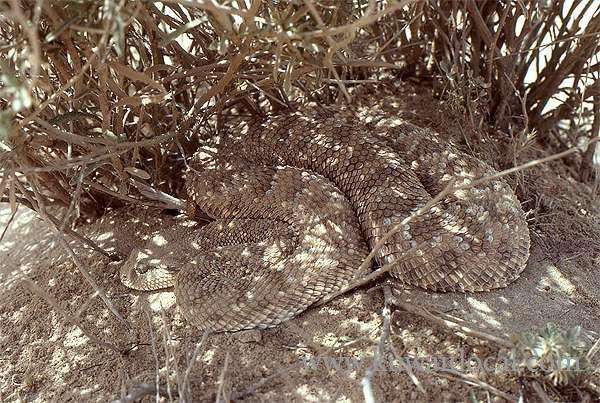Latest News
- Pay Electricity Bills Before Government Transactions Under A New...
- MoCI Cracks Down On Commercial And Retail Fraud
- Four People Were Injured In A House Fire In Raqqa
- Egyptian Deported
- Juwaihil Sentenced To 3 Years For Insulting The Tribe
- Kuwait Issues 1,895 Private Company Licenses
- Passengers Drop At Kuwait Airport
- Six Vehicles Collided Near ‘360 Mall’ On Sixth Ring Road
- Uzbekistan President Meets Kuwaiti Foreign Minister During GCC-C...
- Ministry Of Social Affairs Considers Investment Within Headquart...
- Kuwaiti Lawyers Association Launches 'Paperless Justice' Initiat...
- Parliamentary Committees Coordination: MPs Express Preferences F...
Snakes In Kuwait Are Estimated To Be At Risk Of Extinction

Snakes in Kuwait are estimated to be at risk of extinction with the unprecedented decline in their number due to the current deterioration of normal wildlife and loss of the animals they feed on, reports Al-Rai daily.
While the summer months represent the period of snakes when they go out in search of food, sunning and mating, they are killed by residents of residential areas – especially in Jaber Al-Ahmad City, which is close to the snake breeding areas, posing a major threat to biodiversity in life.
In order to shed light on the reality of the snakes in Kuwait, Al-Rai had a meeting with the environmental activist Awdah Aber Al-Bazali who said: “There are 10 types of snakes in Kuwait, some of which have become extinct, and others have been left with a small number due to desertification and overgrazing. This has led to the disappearance of rodents and lizards that are the source of food for living things, including snakes.
Al-Bazali pointed out that “Black Wall” snake has become extinct without any trace for more than 15 years followed by the dangerous snake called (Umm Junib) and then another snake with light poison called the Arab Cobra (jet) that is up to two meters long and seen during the day.
After this is another snake known as Mouse, which is most prevalent in farms that are non-toxic. He complained that people kill snakes in Kuwait out of fear of being in danger, while in places like Australia snakes are well kept. He also said snakes reproduce in the summer and love to live away from humans. If they are endangered or attacked, they use many means to defend themselves.
They may attack and bite, while their body is blown out of their size to frighten enemies. They also rub their shells to make a sound. He said some of them even turn on the back, swallow the tongue, and smell foul to pretend to die.
He stated that there are those who swam from the mouth to frighten enemies. He added: “Snakes have enemies among animals such as pinks, foxes, and wild cats. To avoid their enemies, the method of concealment is used. Their colors are close to the environment in which they live. The desert is colored in sand, while the forests are brown and green in the colors of trees and plants. And the lines on the back hide the direction of movement whether it is forward or backward to deceive predator”.
Trending News
-
 Eid Al Fitr 2024: Crescent Moon Not Sighted In Sau...
08 April 2024
Eid Al Fitr 2024: Crescent Moon Not Sighted In Sau...
08 April 2024 -
 Kuwaiti Cabinet Plans Public Holiday On April 4, 2...
01 April 2024
Kuwaiti Cabinet Plans Public Holiday On April 4, 2...
01 April 2024 -
 Kuwait Implements Home Biometrics Services Ahead O...
14 April 2024
Kuwait Implements Home Biometrics Services Ahead O...
14 April 2024 -
 MOI Urges Pre-booking For Biometric Appointments V...
02 April 2024
MOI Urges Pre-booking For Biometric Appointments V...
02 April 2024 -
 When Will Eid Al Fitr 2024 Take Place In Qatar, Ba...
08 April 2024
When Will Eid Al Fitr 2024 Take Place In Qatar, Ba...
08 April 2024 -
 On Sunday, The Meteorological Department Warns Of...
07 April 2024
On Sunday, The Meteorological Department Warns Of...
07 April 2024 -
 Kuwait Airways Provides Update On Flight Schedule...
14 April 2024
Kuwait Airways Provides Update On Flight Schedule...
14 April 2024 -
 Winners Of Kuwait National Assembly 2024 Elections
06 April 2024
Winners Of Kuwait National Assembly 2024 Elections
06 April 2024 -
 Gathering For Eid Al-Fitr Prayers: Kuwaiti Citizen...
10 April 2024
Gathering For Eid Al-Fitr Prayers: Kuwaiti Citizen...
10 April 2024 -
 Transforming Kuwait's Public Transport: The Digita...
07 April 2024
Transforming Kuwait's Public Transport: The Digita...
07 April 2024












Comments Post Comment